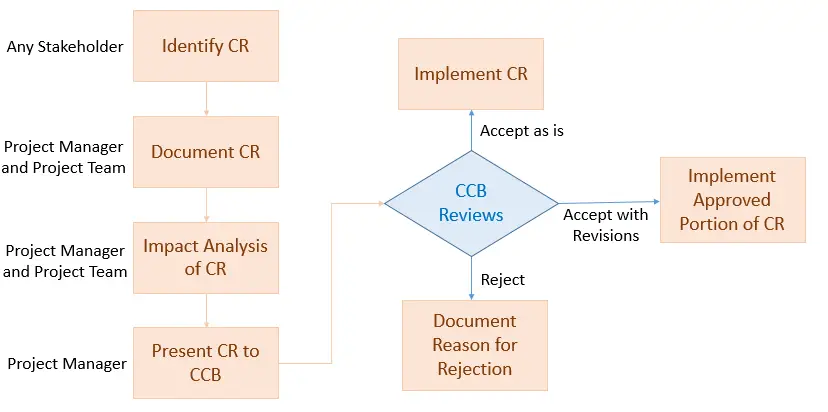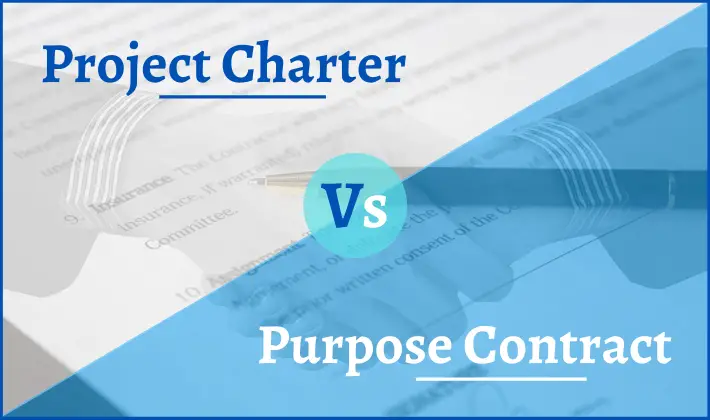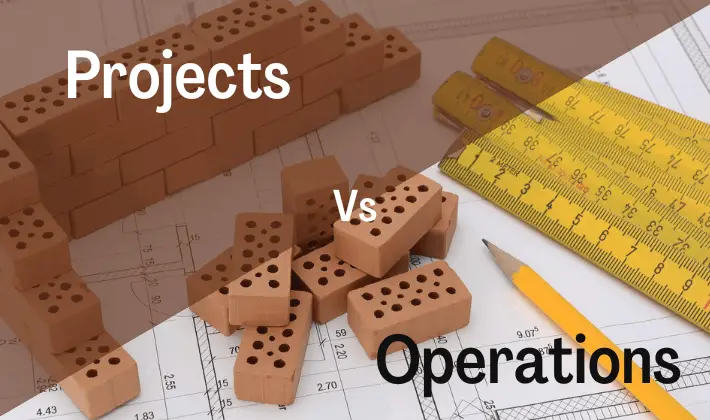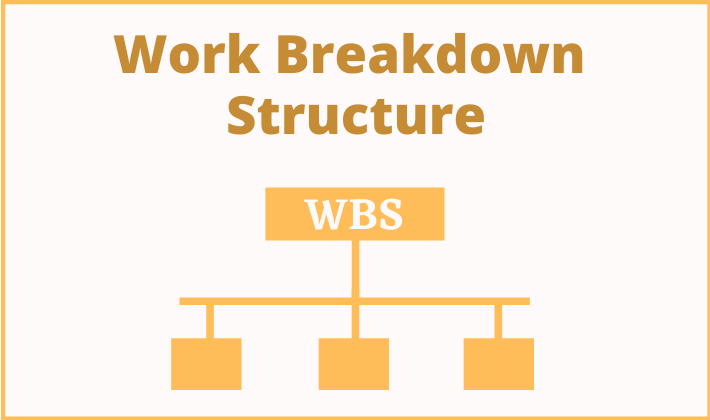You need to understand PMI’s change management process flow in order to answer PMP change request questions.
The questions related to project changes in the PMP certification exam are long, confusing, unnerving, and difficult. Sometimes, all options seem to be the correct answer but they tend to become easy if you understand the steps involved in PMBOK Guide’s “Perform Integrated Change Control” process.
You too might have faced difficulty while answering PMP certification questions on Project Change Management. I have written this post to provide complete explanation of PMBOK Guide’s Change Management process, which will help you in answering such questions.
Let’s take a deep dive into PMI’s change management procedures and understand how a change request flows across different processes of the PMBOK Guide.
PMBOK Guide’s Change Management Process for PMP Exam
Let’s look at some basic definitions of project changes and related terms before understanding the PMBOK Guide change management process.
Change – A Change is a suggested modification to any plan, document, work product, deliverable or artifact. It needs an approval from CCB before it can be implemented.
Change Request (CR) – A formal documented proposal submitted to CCB for taking decision on a change. A CR document contains complete description of the change along with its impact analysis.
A CR could come as one of the following:
- Preventive action – It an intentional activity, which ensures the future performance of the project is aligned with the defined project management plan.
- Corrective action – It is an intentional activity, which realigns the future performance of the project with the defined project management plan.
- Defect repair – It is an intentional activity, which modifies a non-conforming product or product component. A change is different from a defect but defect repairs can lead to a CR. You should read my article that explains why a defect repair is considered as a change request to understand this concept.
- Updates – An change to formally controlled project documents or plans.
Change Control Board (CCB) – A formal recognized group which is responsible for taking decision on CRs. CCB reviews, evaluates, and take decision on changes. It can approve, partially approve, or outright reject the CRs. The CCB can be one person body and it may or may not include the Project Manager (PM). The PM is responsible for recording and communicating the CCB decisions to the relevant stakeholders.
Change Log – A comprehensive list of all changes along with their attributes that were identified in the project. It can contain attributes like current status, responsibilities, dates etc. It is usually maintained by the PM.
Change Management – The overall process in which changes are identified, documented, analyzed and decided (approved or partially approved or rejected). This process is usually unique to an organization. Many organizations used manual and automated tools for Change Management.
Change Management Plan – A document that defines the formal change management process. It documents how project changes will be identified, documented, analyzed, decided, and monitored & controlled. It is usually based on organizations’ change management guidelines.
You should read my other article definitions of project Change and related terms to get a complete understanding.
Perform Integrated Change Control and Change Request Flow
Perform Integrated Change Control is the process for reviewing, approving, and managing changes. This process happens throughout the project lifecycle.
The following figure provides the relationship of PMBOK Guide’s Perform Integrated Change Control process with other processes. It shows how a change request flows through different PMBOK Guide’s processes.
The flowchart shown below uses following abbreviations:
- M&C – Monitoring & Controlling.
- PICC – Perform Integrated Change Control.
- D&MPW – Direct & Manage Project Work.
The above figure depicts the following points:
- A Change Request (CR) is an Output of most Executing and all M&C Processes.
- A CR is an Input to the PICC Process.
- A decision for CR is taken by the Change Control Board (CCB) in PICC process. A CR can be Approved, Partially Approved, Rejected, or kept in abeyance by CCB.
- Approved changes and Change Log is Output of PICCC.
- Approved changes are Input to the D&MPW process, where they are implemented.
As per the PMBOK Guide, the composition & authority of the CCB is defined in the Project’s Change Management Plan (CMP). CMP is a subsidiary plan of the comprehensive Project Management Plan. A Project Manager (PM) may or may not be the part of the CCB but she/he has to act in accordance with the guidelines of the CMP.
Guidelines/Steps for Handling Change Requests
You can refer to the following figure to understand the change request flow.
Step I – Identify New Change Request
Who performs this step – A CR can be identified by any stakeholder. She/he can be part of project team or outside the project team.
Primary Responsibility – Not applicable.
Step II – Impact Analysis of CR
Who performs this step – PM and/or Project Team members analyze the impact of CR on various project objectives e.g. Scope, Schedule, Cost etc.
Primary Responsibility – PM
Step III – Document CR
Who performs this step – PM and/or Project Team members documents the CR. They also document suggested alternatives and possible solutions.
Primary Responsibility – PM
Note: Most of the times, the Step II and the Step III are performed together.
Step IV – Present CR to the CCB
Who performs this step – PM and/or Project Team members presents the documented CR to CCB members. They explain its impact on various project objectives.
Primary Responsibility – PM
Note: PM could be a member of CCB
Step V – Take Decision on CR
Who performs this step – CCB takes a decision on CR. It can approve, reject, or partially approve the CR. It can also ask PM to re-document it or postpone the decision to a later date.
Primary Responsibility – CCB
Step VI – Convey Decision on CR to the Stakeholder(s)
Who performs this step – PM and/or Project Team members documents and communicates the decision taken b CCB to the interested stakeholders.
Primary Responsibility – PM
Step VII – Implement Approved Changes
Who performs this step – PM and/or Project Team members implement the approved changes.
Primary Responsibility – PM
How to Answer PMP Change Management Questions?
Now that we have understood the PMBOK Guide’s view on Change Management, we are ready to tackle PMP Change Management questions. While attempting these questions, you should adhere to the following rules:
- Unless otherwise explicitly stated in the question, assume yourself to be the PM and then answer the question.
- Unless otherwise explicitly stated in the question, assume yourself to be working in a Matrix Organization. It means that you do not have complete control over your team and you do not have complete decision making power. It also means that you share you power with Functional Managers.
- As a PM, you have the responsibility to solve the problem presented in the question. You have to take action on CR as suggested in the previous section. You cannot shun from your responsibility.
- Unless otherwise explicitly stated in the question, assume yourself to be outside the CCB. It means you cannot take any decision.
- You can present the CR (along with possible alternatives/solutions) to the CCB and share your opinion with the CCB. But, you cannot take the decision on behalf of the CCB.
- Only CCB can take a decision on the CR. They can approve it, partially approve it, reject it or take any other decision.
- It is possible that CCB is not explicitly mentioned in the question. A similar Role/Person could be mentioned in the question e.g. Sponsor, Customer or Senior Management.
- If you see a “what comes first/next” kind of question, then you should answer it by following the 7 sequential steps described in the previous section.
- There are only 4 options provided with the question. You have to choose the best option among the 4 options even if you feel that a 5th option would have been a better answer.
Sometimes the PMP question are over-dramatic. You can find situations similar to following statements in PMP exam:
- If you don’t implement the Change Request, the World will fall apart
- If you don’t implement the Change Request, billions or dollars will be lost or something similar
- Someone has put a gun on your head and asking you to implement the Change Request
So, what should you do, if such a situation was presented in an exam question?
These situations may be over-dramatic, but you may get some really tough questions in the exam but the best part is you don’t have to over-think about the situation.
You just have to follow the 7 steps & 9 rules to answer the change related questions. You will never do a wrong question in the exam.
Final Thoughts
The Change Management guidelines defined in the PMBOK Guide could be different from what you have experienced or what is followed in your organization. While answering a PMP question, you should follow the PMBOK Guide standard even if you feel otherwise.
You should practice a lot of questions to succeed in the exam. There are no shortcuts to pass the exam. If you are looking for free PMP sample questions then you should look at free sample questions for the PMP exam. If you are looking at some good sources for paid questions, then you can look at my recommendation in most popular PMP test simulators.
If you are still confused about the questions, you can put in a comment and I will provide an answer as a comment. Good luck.







![Which Type of Contract Is Most Risky In Procurement [PMP]](https://www.pmbypm.com/wp-content/uploads/2012/02/Type-of-Contract.png)



Let me give you an example to understand Change further
Project Plan is approved by the sponsor/Sr Management and contains detailed project schedule with tasks and assignments to the tasks.
Let us say there is a Task A allocated to Smith and its Planned Start Date is 17 Aug’2014
Come 05’Aug’2014, Smith is no longer working in the organization and the Project Manager opens plan and replaces Smith with John as the Task Executor
My question is that , As per PMBOK does this qualify to be a change and if so how is it handled through CCB?
Hi Ashutosh,
Let us first understand the definition of “Change”. You can read the definition of Change here – https://www.pmbypm.com/what-is-a-change/
Now let us answer your Q. To answer let us look at following Q:
1. Was John part of the team?
2. (Considering John to be the part of the team) Is there any other impact on Project – like Schedule or Cost or Quality or any other parameter by assigning of John?
Basically, we are trying to ascertain “Is it a Change?”. If the answer to Q2 is “NO”, then it is not a “Change”. So “Change Management” will not happen. Otherwise the PM will have to follow Change Management process.
PMP Q are usually long. They give you entire situation. Based on that you can pick the best amongst the 4 options. Hope it helps.
If he wasn’t part of the team, wouldn’t you need to update the HR plan?
Niki, If John is not part of team, you will need to update the HR plan. In that case, it is likely to be a CR – depends on what Q is saying.
Please let me share with you the following situation about change and my preferred alternative for each question to know your opinion.
Let’s say that you are the PM of a project which is about to be handed-out on time to the client in the closing phase, but an unexpected key stakeholder says that his/her deliverable or requirements are not met and wants a change. (No more explanation about the power or interest of the Stakeholder, but the word “key” before Stakeholder).
1. How the PM should have avoided this? Stakeholders management, Stakeholders Engagement Plan, Better quality management, or Communication Management (my preferred alternative as PM perform communications 90% of the time).
2. What should the PM do next? Communicate sponsor, request the stakeholder to perform the request change, postpone for a phase 2 or analyse impact (My preferred alternative before to escalate to sponsor or senior mgmt).
3. According to your article, if a change is approved then it becomes input for the D&MPW, but in the middle what should be the next step for the PM? To update a project document like the issue log, change log or impact risk responses, implement it immediately, change the schedule, calculate costs?
4. Let’s say that the change does not impact at all in time (ahead of schedule yet), cost and scope. Formally speaking, it should not be a “change” then the PICC process should not be performed. Nevertheless, what should be the appropriate decision for the PM? Do it anyway, escalate it, reject it or log it in the issue or change log?
Thank you so much. All the best.
Hi Lucho, Answer to your Q depends entirely on how PMP Q is framed. IF you send me exact Q, I will be able to answer.
BR, Praveen.
Very useful & organized post… thanks 🙂
The thing I have come across that normally the contractor will see the amount. They always underestimate the manpower as well as the cost. That may lead to penalty later on.
My organization did that at least twice.
Yamin, In my opinion that is poor estimation and not related to change management.
BR, Praveen.
Hi Sir,
Can you elaborate on the change log being an input to the D&MPW in the above figure? Is it under the Project management information system (PMIS)?
Change log contains information about the status of a CR and may contain actionable information, which may be required in D&MPW.
BR, Praveen.
If someone request changes , First -Do I need to log/issue/create change request ? and next analyze impact
or
before log CR, do I need to analyze impact ? (I agree that we need to analyze and provide recommendation on solution for CR before submit to CCB, but my question is something between someone ask changes what I need to do)
Hi Venkat, As written “Note: Most of the times, the Step II and the Step III are performed together.”
BR, Praveen.
There is an approved change request. After implementing the changes, cost and schedule baseline also need to be updated. In order to update these baselines, do we have to submit another change request or previously approved change request will have those baseline changes included?
Look at Step II. You have to perform thorough impact analysis before subitting a CR to CCB.
Very informative blog.
I have a question. Lets suppose that a PM is working on a project for which the “Planning processes” are being executed, where the scope and schedule is being defined. The client comes and asks for the cost and time impact of adding some extra scope (RFQ) without a clear indication if they will add the extra scope or not.
Should this request from the client be handled as a Change Request?
If yes! then its not coming from the “Executing processes” or “M&C processes”
Thanks for your guidance!
Hi Nabeel, Good Q. It should be considered as a change if the scope and schedule plans have been approved. Otherwise, if the scope and schedule plans are still being preprared then it might not be considered as a change. Additionally, please note that all processes (including planning processes) are performed multiple times during a project. All the best.
Shouldn’t Impact Analysis of CR and Document CR swap places in the flowchart ?
Raj, Kindly read the note after Step III – Most of the times, the Step II and the Step III are performed together.